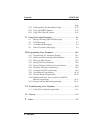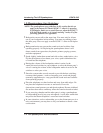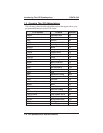
1.2.1Using A Full-Duplex Speakerphone
The Impact SCS 8324F-** speakerphone uses the latest full-duplex
speakerphone technology. (Full-duplex technology enables both parties
on a speakerphone call to speak simultaneously—half-duplex
speakerphones allow only one person to speak at a time.) The 8324F-**
will operate in either full-duplex or half-duplex mode depending on the
current line conditions. For example, satellite calls or calls with a delay
involved may prevent the telephone from operating in full-duplex mode.
At the beginning of each call the telephone must perform a “speech
training” test. To achieve optimum performance from the full-duplex
speakerphone, Comdial recommends that each user in turn speak about
10 consecutive words to allow the telephone to “train” itself. Note that
during the “speech training” test, the speakerphone is operating in
half-duplex mode.
Depending on the telephone line conditions and the type of speakerphone
at the other end, it may not be possible for the 8324F-** to operate in
full-duplex mode. If the speakerphone at the other end is a half-duplex
speakerphone and both parties are in speakerphone mode, the half-duplex
speakerphone is the controlling factor, preventing the 8324F-** from
operating in full-duplex mode.
When using a full-duplex telephone, you must be aware of these different
situations and react accordingly when the far-end party does not respond.
However, you will discover it is much easier to interrupt the far-end
talker and have a more natural conversation than you can have with a
half-duplex speakerphone.
NOTE: Pressing any button (mute, hold, etc.) on the speakerphone
while in full-duplex mode causes the system to perform the
“speech training” test again. For example, if you press MUTE
while in full-duplex mode, when you release the call from
mute, the system will perform the entire “speech training” test
again.
GCA70–245 Introducing The LCD Speakerphone
LCD Speakerphone Reference Manual 1–3


















